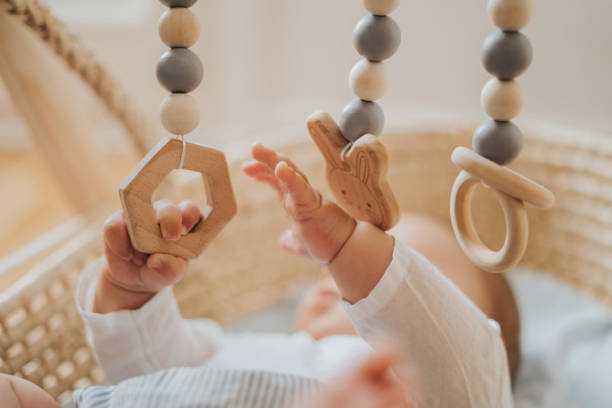Montessori education has two purposes: biological and social. While supporting the child’s natural development in line with his innate potential is a biological purpose, helping the child adapt to the environment and teaching him how to use the environment is also a social purpose. The sensitive period for the development of the senses is usually between the ages of 3-6. In this sensitive period, we can help the child develop his/her senses by preparing an environment suitable for his/her developmental needs. The main purpose in early childhood is to support the development of the child. During this period, with rapid physical growth, children’s senses develop and they direct their attention to their surroundings. For this reason, the foundations of mental power are laid with the right stimulants to be presented to the child in this period. Training the senses does not only make individuals a good observer, but also prepares them for life. Human sensitivities increase thanks to the ability to distinguish between sensory exercises and stimuli.
Sensory Materials
The senses are tools made up of mental impressions that enable children to connect with the environment and help them acquire important skills. The senses open the way to knowledge for the child to discover the world he is in, and the education of the senses offers the key to discovering the world. The human mind creatively shapes and interprets what it receives from the outside world. For this reason, it is very important for the child to internalize and mentally reinterpret the stimuli received through the senses through their own experiences. With the specially designed materials used in Montessori education, abstract concepts are embodied and children are provided with the opportunity to recognize, group and analyze concepts in interaction with objects. With these materials, attention is polarized and children learn to focus their attention on the material.
Montessori materials are the basis of education and the most important aspect of the learning process. The materials used in the education of the senses are designed to represent many qualities of the object such as weight, texture, color, shape and size. While a feature of the objects is brought to the fore, this feature is isolated from the others in order to focus attention and the qualities of the objects are designed as the same. For example, color tablets used to distinguish colors were prepared from the same material, in the same size and in the same size. This helps children focus on only one feature of the object, namely its color, so that they can easily notice the differences. Distracting elements such as size and shape in the material are eliminated, thus helping the child to make mental arrangements. At the same time, this design makes the object interesting.
In Montessori education, rich materials are used for the five senses that enable children to have various idioms through sight, touch, smell, taste and hearing. These materials enable the teaching of different concepts by utilizing the sensitivity of children’s senses. With these materials used, children have the opportunity to learn skills such as basic geometry, which they are thought to be able to learn in the future, at an early age. Through trial and error, children are given the opportunity to repeat as much as they want, and they are allowed to progress gradually.
The sensory materials used in Montessori education should be meticulously prepared and the material should have the following features:
1. Aesthetics: It should not be a meaningless beauty, but an aesthetic that appeals to the soul of the child and prompts him to work.
2.Isolating difficulties: Materials appeal to one sense at a time. The material we call flat should be really smooth.
3. There is no definite order in the sense materials. From simple to difficult. First work with cylinder blocks because error checking is evident here. But with the pink cube, the brown ladder and the red bar, error checking becomes more and more difficult. Especially on the red stick, maturity and a different perspective are needed. For this reason, children are presented with work in order from the most obvious to the most complex.
4. Sense materials are linked to daily life practices. The child uses what he has learned in daily life practices to use sensory materials. Such as moving tables, chairs, washing hands, laying carpets.
5. Missing or broken material should never be found in the environment. The educator must check the material before the child comes to the venue.
6. The child determines the place of work himself. Identifying the workplace allows the child to consider whether my work will fit here or not. This is given to the child by the practice of laying the carpet.
7. Materials give the child sensitivity. Sensitivity to the five senses helps to increase children’s awareness of the properties of objects.
